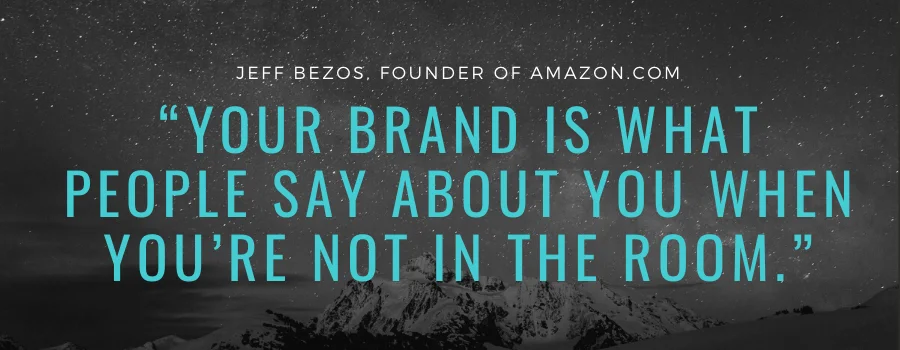One of the quickest ways to get stressed and burned out in life is to try and please everyone all the time.
And one of the quickest ways to see your website or blog sink into obscurity is to do the same.
You share a few posts, retweets, post a few photos or even try your hand at creating a quick video, and you wait. A few days later and you have one like and no reposts. What happened?
You didn’t qualify your content. You weren’t specific enough.
It is impossible to please everyone, so don’t try. This is especially important in marketing because it is perhaps the fastest way to create a website that is bland and that no-one cares about. It’s also a sure-fire way to prevent yourself from building any kind of trust or authority.
Most content marketers make this same mistake when first starting out. Working hard to develop original, conversational content with a broad appeal. But here’s the reality, you’re not CNN. You don’t want broad appeal. You want people who will buy your products, services, or click on your affiliate links and ads. That means targeting.
You Need to Leave People Out
If you were to create a website that appealed to everyone, that would mean that the posts would have to be useful for people who were new to the topic and those that were experts. It would mean that you couldn’t make any very controversial statements, and it would ultimately prevent you from gaining any sense of ownership from your visitors.
Conversely, if you have a strong point of view, a mission statement and an ideal customer, then you can create a website that will greatly appeal to the right person.
One of the fastest ways to make your content more interesting is to quickly identify who it isn’t for. This will rule out people who wouldn’t have been the right demographic for you to market to anyway, but it will also help you to make your content appear that much more appealing to those that are still present.
Many brands will attempt to qualify their content in a way that is transparently fake. For example, ‘If you don’t want to earn mega bucks, then leave right now!’. This doesn’t work because the visitors see through it, and it just looks desperate.
However, if you say ‘this course is only for professional lawyers that are already making a lot of money’, then those professional lawyers will be much more interested than if you had said ‘this course is for beginners and experts alike’. You want your target demographic to feel that the content you have on offer is aimed directly at them.
You Need a Strong Voice and Even Stronger Viewpoint
Likewise, you need to ‘take a side’ when it comes to your content. For instance, if you have a site about health, then you can decide to come down on the ‘highly scientific’ side of things and only promote strategies backed heavily by science. Alternatively, you could decide to promote naturalistic products with no chemicals. It doesn’t matter which – that comes down to your personal beliefs – but you do need to pick.
Why? Because, this way, people who agree with you will be able to choose your site over other sites. They will know that your site shares their principles and their beliefs, and they will be able to feel confident that the advice you share and products you recommend are in keeping with their belief system.
If they can’t know that for sure, then how can they trust you enough to buy from you?

Original Photos Serve as Targeting Filters
The word business can these days be used to describe two completely different beasts. On the one hand, you have the lumbering dinosaur of a business that is still stuck in the 90s. That organization uses a bland logo that is vaguely meaningless, it has a stark white website, and it doesn’t show any personality for fear of looking somewhat less professional.
At the other end of the spectrum is the modern business that is using social media to its fullest to promote itself. This company knows that being a little quirky and showing personality will help it to stand out from the crowd, and it knows that only people that meet its buyer persona tend to interact and engage with these specific photos. After all, a highly specific photo that directly relates to your content, topics, or niche, isn’t likely to appeal to people on social media who are not likely to engage with your brand.
Impactful Specific Photos Will Do Your Audience Targeting for You
An image will create an emotional impact in a visitor and can deliver a huge amount of information in a second. If you land on a homepage and see a large image that clearly communicates what that company does, you’ll know immediately if there’s any point in hanging around.
Moreover, images like this elicit an emotional response – which can often translate into a sale. Whether it’s anxiety, dissatisfaction, inspiration, desire, or jealousy… all these things can make us click “buy” even when we don’t really need a product. As Alan Glynn says in Under the Night: it’s not about finding out what people want, but making people want things!
Images – particularly social media Stories – are ideal for letting an audience get to know you, and that in turn helps to build trust and increase engagement.
Use The Efficiency of the Social Platforms
Better yet is how quick and easy posting a Story to Instagram is. Most mobile devices will allow you to simply share an image straight from your camera or photo gallery and as it’s all visual there’s no need to think of anything witty to say. You literally just point and click, then hit upload to make your point and start getting views. There’s no expectation either for you to upload something every day, so you won’t risk making an account that immediately looks and feels like a ghost town. While many businesses recommend two posts daily, others say this can be overkill and that two a week is enough.
So, what is our recommendation on posting frequency? Listen to your niche audience. Many audiences don’t want to be overwhelmed with posts throughout the week. Many are too busy with work or personal matters. But there are some niches that have developed into a community where two or three posts a day is considered not just normal, but preferred. Pay attention to your competitors and follow the lead of the most popular and successful content creators and brands in your industry. If they’re posting three times a week – do that.
Compared to something like a blog post – or even a Twitter tweet, then, Instagram really doesn’t require much of an investment of time and will let you rapidly create a following for yourself. And seeing as you can easily share your Instagram images to Facebook and Twitter, this can even make it easier for you to keep on top of those accounts. This is a big reason that many celebrities have taken to Instagram and Twitter over more complex social sites like Facebook – it lets them stay in touch with millions of fans while maintaining their hectic schedules.
Closing Thoughts…
All business owners, solopreneurs, and marketers have the same goal on social media. Build a targeted audience that can easily be converted into paying customers. If you sell the most adorable and advanced baby stroller ever created, guess what, you’re not going to sell any of them to teenagers or college students. So why would you waste your time trying to attract a demographic that won’t, can’t’s and shouldn’t become your customer?
- Focus on specificity in your social media posts.
- Develop your voice and know your brand personality.
- Target your preferred buyer persona and stick to it.
- Use niche-specific photos and imagery to drive engagement.





